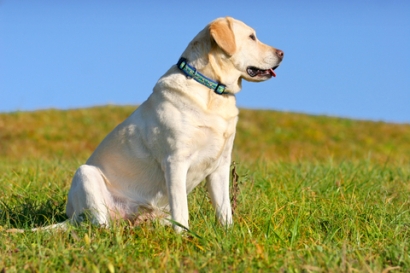Canine Skin Cancer
and Your Responsibility as Pet Owner
Sun Protection is a fact of life™
For many pet owners, canine skin cancer is a fact of life. You may be unprepared for it but you must face it if you want your faithful companion to live longer, happier and healthier.
News - Good and Bad
The bad news is that one-third of all types of dog tumors are eventually diagnosed as canine skin cancer.
Add in the fact that dogs will also have six times more skin tumors than their feline counterparts and you might want to reconsider getting a dog for your pet.

On the other hand, the good news is that the skin tumors of dogs are more likely to be diagnosed as benign in comparison with cats.
Plus, you may take comfort in knowing that most types of dog skin cancer occur during the dog's middle age at about 6 years.
What are the known causes?
Veterinary science has yet to uncover the causes for most canine skin cancers.
There are four major types - epithelial tumors, round cell tumors, mesenchymal tumors, and melanomas ( malignant melanoma ) - with their own subtypes. Sun exposure has been identified as the main culprit in many of these skin cancers.
You may be at fault as a pet owner if and when you did not take the appropriate measures to provide sun protection for your dog. But that's getting ahead of the story.
There is also reliable evidence that genetics may play a significant part in the development of skin cancer in your beloved pets.
If you can compare notes with your veterinarian and with fellow pet owners, you may see a pattern of the breeds most vulnerable to canine skin cancer.
Boxers, bull mastiffs, Scottish terriers, Kerry blue terriers, basset hounds, Norwegian, elkhounds and weimaraners all have been found to have higher incidence of skin cancers.
It may be attributed to their light colors and/or thin coats as well as their exposure to the sun.
Other environmental factors affecting the risk for skin cancer in dogs include non-neutering of male dogs for perianal tumors and advancing age.
You can do something about the matter of neutering but age is something that you cannot do anything about.
How can you protect your dog?
So, let's go back to the ways that you can protect your dogs from their own versions of skin cancer. And while you are at it, you might as well take the necessary measures for your own uv protection.
First, you should limit sun exposure especially from 10 a.m. to 4 p.m. - earlier and later for high elevation area. We are not just talking about sunny weather as the sun's rays are present even in cloudy weather and in winter.
Second, you must apply special pet-friendly dog sunscreen on your dog. Ask the vet for specific brands and information.
You should never use your human sunscreen on your dogs and vice versa since the ingredients are very different.
Third, you can look into sun protection clothing for your dogs, if possible. If it is not for any reason, then avoid clipping the coat hair in a very short manner.
The fur will act as your dog's natural protection against ultraviolet radiation.
Undoubtedly, your pet dog's protection against canine skin cancer rests in your hands. Are you ready to take on the job?
Join in and share your experience or story. How?
Simply click here to go to Skin Cancer Encounters and Survival Stories
Return to Home Page Return to the Top








New! Comments
Have your say about what you just read! Leave me a comment in the box below.